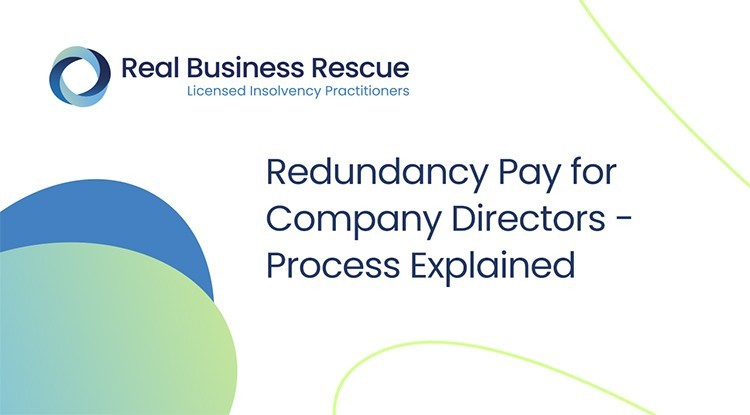If a Company Goes Bust Who Pays Redundancy? Legal Insights for UK Employees
If a Company Goes Bust Who Pays Redundancy? Legal Insights for UK Employees
Blog Article
Checking Out the Interplay In Between Company Redundancy and Business Adaptability for Future Development
In the vibrant landscape of today's service world, the detailed connection in between business redundancy and business flexibility arises as a vital factor for continual growth and success. Business often deal with the challenge of striking a delicate balance in between maintaining a level of redundancy to minimize risks and promoting adaptability to react swiftly to the ever-evolving market demands. This fragile interplay holds the key to not just surviving in rough times yet also prospering despite uncertainty. As we check out the multifaceted measurements of this interplay, appealing understandings into exactly how companies browse these complexities to lead the way for future development wait for.
Value of Business Redundancy
Business redundancy is a critical component that boosts business resilience and reduces operational risks. By incorporating redundancy steps within the organizational framework, firms can much better hold up against unexpected disruptions and fluctuations in the company environment. Redundancy works as a critical barrier, permitting business to adjust and react efficiently to unanticipated obstacles without compromising important operations.
One trick aspect of the relevance of company redundancy is its role in making sure continuity during times of crisis. When confronted with unexpected modifications or emergencies, repetitive systems, resources, or personnel can tip in to keep crucial features and avoid widespread disturbances. This continuity not only safeguards the business's track record and client depend on but additionally reduces financial losses and functional downtime.

Techniques for Organizational Versatility

Another crucial approach is purchasing innovation and framework that can sustain versatility and scalability. Carrying out digital tools, automation, and information analytics can improve operations, enhance effectiveness, and give useful understandings for notified decision-making. Additionally, developing versatile business frameworks that permit for fast changes to market characteristics and consumer needs is important for staying competitive in a rapidly advancing atmosphere. By proactively determining potential disruptions and chances, organizations can proactively thrive and adjust in an ever-changing organization landscape.
Harmonizing Redundancy and Adaptability
Attaining an unified equilibrium in between functional redundancy and organizational adaptability is extremely important in browsing the complexities of a vibrant company setting. Redundancy within a business provides a safety and security internet, making certain continuity and security in operations. Nonetheless, an excess of redundancy can bring about ineffectiveness and hinder versatility to changing market problems. On the various other hand, organizational versatility allows companies to respond immediately to external interruptions and seize new possibilities. Striking the best equilibrium between redundancy and flexibility is a delicate procedure that calls for a deep understanding of the organization's objectives, sector dynamics, and threat resistance.
To attain this balance, business need to conduct regular assessments of their operations to recognize areas where redundancy is essential for danger reduction and where adaptability can drive advancement and growth. Implementing adaptable structures, promoting a culture of continual discovering and renovation, and motivating open interaction across all levels of the organization are key strategies to integrate redundancy and anchor flexibility properly. By lining up these 2 critical components, firms can place themselves for sustainable growth and success in an ever-changing organization landscape.
Study on Adaptation Success
In taking a look at instances of effective business adjustment, it becomes evident that the interaction between operational redundancy and flexibility is a defining element in forming durable companies. One engaging instance research study is that of Netflix. At first a DVD rental solution, Netflix demonstrated remarkable flexibility by transitioning into a streaming system when digitalization interrupted the industry. By purposefully buying technology and web content production, Netflix not just flourished but survived in a rapidly evolving market. An additional standout example is Amazon. Beginning as an on-line book shop, Amazon constantly adjusted its business version, broadening right into varied industries such as cloud computing and fabricated knowledge. This adaptability enabled Amazon to remain ahead of competitors and meet altering customer needs. Last but not least, Adobe supplies a significant image of effective adjustment. The business changed from marketing software program licenses to a subscription-based model, ensuring persisting revenue streams and enhanced customer engagement. These instance studies highlight the importance of functional redundancy combined with organizational versatility in fostering lasting growth and competitiveness.
Building Strength for Future Growth
Structure strength for future growth calls for a critical placement of functional procedures with market characteristics and arising trends. Business have to adjust to altering settings by cultivating a culture of versatility, development, and constant enhancement. Durability entails not only recovering from setbacks yet likewise proactively getting ready for future obstacles. One vital aspect of structure resilience is investing in robust risk administration methods to reduce possible interruptions. This consists of scenario planning, branching out supply chains, and establishing backup prepare for various contingencies (who pays redundancy money).
Furthermore, promoting solid connections with stakeholders, such as customers, staff members, distributors, and the community, is vital for keeping and weathering unpredictabilities trust and support during stormy times. Efficient communication and transparency play a vital role in building durability, as they aid align expectations and help with cooperation in navigating uncertainties.
Furthermore, organizations require to prioritize knowing and growth initiatives to upskill employees and furnish them with the essential tools to adapt to changing circumstances. By investing in their labor force, business can enhance their versatility and dexterity, inevitably enhancing their durability for sustainable future development.
Conclusion

In the dynamic landscape of today's organization world, the detailed relationship in between firm redundancy and business flexibility emerges as a have a peek at these guys crucial aspect for sustained growth and success. Companies often deal with the obstacle of striking a fragile balance between maintaining a level of redundancy to mitigate risks and promoting flexibility to respond swiftly to the ever-evolving market needs.To achieve this balance, business need to conduct normal analyses of their operations to determine areas where redundancy is essential for danger reduction and where adaptability can drive advancement and development.In conclusion, the interaction between firm redundancy and organizational versatility is critical for future development. Building resilience with a combination of redundancy and flexibility will make sure that companies are prepared for the obstacles of the future.
Report this page